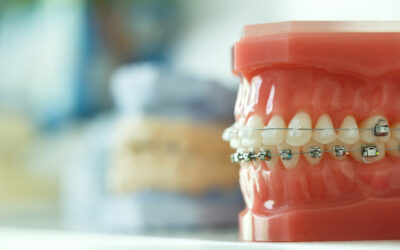What is a Pulpectomy Treatment for Children?

Each tooth has an inner pulp, which is the living part of the tooth containing nerve endings and blood vessels. This applies to both baby teeth and permanent teeth. The pulp helps detect sensations such as hot and cold temperatures and plays a crucial role in producing dentin, the calcified tissue that strengthens and supports the tooth. It’s vital to keep the pulp healthy for proper tooth function and development, especially in children.
Why Might Your Child Need a Pulpectomy?
One of the main reasons for a child needing a pulpectomy is due to untreated cavities. When tooth decay reaches the pulp, it can cause an infection, leading to pain and sensitivity. Often, children will experience toothache, discomfort when chewing, and sensitivity to hot or cold foods. If the decay has formed beneath a filling or other restoration, it may also damage the pulp over time, requiring intervention.
In addition to cavities, dental trauma can also necessitate a pulpectomy. A cracked or broken tooth can expose the inner pulp, causing severe pain. While not all dental injuries require this procedure, deep cracks that reach the pulp often lead to inflammation and sensitivity until treated.
Pulpectomies are specific to children because the root structures of baby teeth differ from those of permanent teeth. Treating the infected pulp in a baby tooth can preserve the tooth’s role as a placeholder, ensuring that permanent teeth emerge in the correct positions.
What Happens During a Pulpectomy?
The pulpectomy procedure begins with numbing the affected area using a local anesthetic. This ensures the child is comfortable and pain-free during the treatment. Once the tooth is numbed, a dental dam is placed around the tooth to isolate it from saliva and bacteria, creating a clean environment for the procedure.
The dentist will then remove the decayed portions of the tooth and extract the infected pulp using specialized dental instruments. After the infected tissue is removed, the inside of the tooth is disinfected to prevent further infection. The canals of the tooth are then filled with a medicated material that helps heal the tooth. In the case of baby teeth, the material used is safe and easily reabsorbed by the body once the tooth naturally falls out.
Once the procedure is complete, the dental dam is removed, and the child can go home. Any post-procedure discomfort, such as mild sensitivity or soreness, should subside within a few days. Following the procedure, your dentist may recommend pain relief options if necessary.
Why Not Just Remove the Tooth?
You may wonder why a dentist doesn’t simply remove the baby tooth, especially since it will eventually fall out on its own. Baby teeth serve important functions beyond their temporary nature. They help children chew food properly, which is crucial for digestion and prevents the risk of choking. Without enough teeth, children may struggle to chew food thoroughly, increasing the likelihood of swallowing large pieces of food.
Additionally, baby teeth guide permanent teeth into their proper positions. Each baby tooth acts as a placeholder, ensuring that the adult tooth emerges in the correct location. Premature removal of baby teeth can lead to misalignment, crowding, and malocclusion (a misfit between the upper and lower teeth). This could increase the chances of needing orthodontic treatment in the future.
Keeping baby teeth intact also benefits a child’s confidence and social development. Having a full set of teeth can make a child feel more comfortable speaking and smiling, which contributes to their overall self-esteem.
How to Help Your Child Avoid a Pulpectomy
The best way to prevent your child from needing a pulpectomy is by promoting good oral hygiene habits and preventing cavities. Encourage your child to brush their teeth at least twice a day with fluoride toothpaste and floss daily. Be sure to supervise younger children to ensure they are brushing all areas of their mouth, especially the hard-to-reach back teeth where cavities often develop.
Regular dental checkups are essential to maintaining your child’s oral health. At Access Dental your pediatric dentist will perform cleanings, take x-rays, and examine your child’s teeth to catch any potential issues early. Early detection of cavities allows the dentist to treat them with less invasive procedures, like fillings, before they progress into more serious problems that might require a pulpectomy.
A balanced diet also plays a significant role in dental health. Limiting sugary snacks and drinks can help prevent tooth decay, as sugar is a leading contributor to cavities. Encourage your child to drink water instead of sugary beverages and opt for healthy snacks like fruits, vegetables, and cheese.
While pulpectomies are effective treatments, they are not always necessary for every child or every tooth. In some cases, extraction may be the better option, particularly if the tooth is nearing the end of its life cycle. Consult with our dentists at Access Dental to explore the best treatment options for your child’s unique situation.
By focusing on preventive care, regular dental visits, and good oral hygiene habits, you can help protect your child’s smile and reduce the likelihood of needing extensive dental treatments like pulpectomies.



